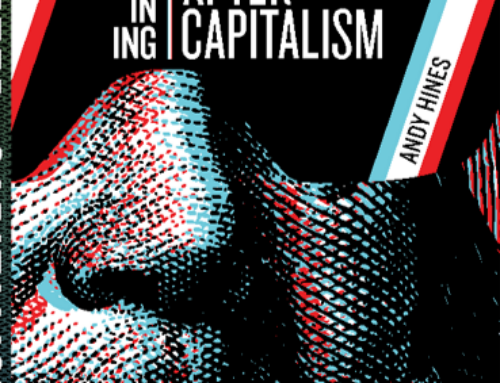The news of Alvin Toffler’s death on June 27, 2016 brought back memories; “back to the futures,” so to speak. Toffler’s classic book Future Shock, actually co-authored with his wife Heidi Toffler, was published in June, 1970. The book soared to worldwide blockbuster status, selling millions of copies. Toffler made “futurist” into a well-known, mass media term. I suspect a number of people who found their way into the University of Houston-Clear Lake’s Studies of the Future program in the later 1970’s were inspired by Toffler’s book and subsequent documentary film.
of copies. Toffler made “futurist” into a well-known, mass media term. I suspect a number of people who found their way into the University of Houston-Clear Lake’s Studies of the Future program in the later 1970’s were inspired by Toffler’s book and subsequent documentary film.
Ah, 1970: 500,000 people were killed in Bangladesh by a cyclone, 67,000 killed in Peru by an earthquake; the Apollo 13 mission to moon was aborted by technical problems; the United States invaded Cambodia; protests against Vietnam war continued; four student protesters at Kent State University were shot dead by National Guardsmen; The Beatles broke up; Jimi Hendrix and Janis Joplin died due to drug overdoses; the Nuclear Non-Proliferation Treaty went into effect; the Boeing 747 began the “jumbo jet” commercial airline era; the first Earth Day was celebrated; the United States Environmental Protection Agency (EPA) began operation. And more.
Events whirled: the “peace and music” optimism of the Woodstock concert in August 1969 gave way to the ill-fated Altamont concert in December 1969, on the footsteps of 1970. Pressing “pause,” some technology came into question. By the end of 1970 the U.S. Senate rejected a new appropriation to further plans for the Boeing prototype of a civil supersonic transport, or SST. But concurrently the famous photograph “Earthrise” that was taken on Apollo 8 likely helped spur the environmental movement–exemplified by Earth Day. Truly an image for the future!
How to make sense of it all?
Toffler pointed out that until the early 1970’s “the word ‘futurist’ was virtually unknown in American intellectual life” and that the word “futurist” “now [1972] denotes a growing school of social critics, scientists, philosophers, planners and others who concern themselves with the alternatives facing man as the human race collides with an onrushing future.” Making predictions was not the objective, futurists “focus…on the array of alternatives open to decision-makers, stressing that the future is fluid, not fixed or frozen.” (Toffler, Alvin. Ed. The Futurists. New York: Random House, 1972. Print. Pages 3-4.)
Toffler noted: “Having watched the arrival of new technologies and having lived through the ’60s and seeing a whole bunch of other social changes taking place, I concluded that change was in fact accelerating, and that most people didn’t have a kind of organized picture of what was going on, and so we began thinking about this and trying to organize our heads and create mental models for trying to understand this. It was the dawning recognition on our part that something humongous was happening, and that it was like secret knowledge because nobody else, nobody else got it….
It occurred to us that when you go to a foreign culture you’re…bombarded by strange cues, by visuals and sound and other inputs that…may be different than the ones in your own culture and may be hard for you to understand and some people get truly disorientated and upset and the sociologists and anthropologists call it ‘culture shock.’ What happens if a new environment comes to you, where you are, and comes to you rapidly, so that you don’t understand its inputs, its cues; and the answer to us was, if you can have culture shock by relocating to another location in space, you could have ‘future shock,’ by in effect, relocating in time: a future comes toward you that you don’t understand.”
Looking back since the book’s publication, critics have pointed out that Toffler was mostly “a prolific reporter of technological and demographic change, an observer of society and trends, and a popularizer of catchy phrases” and that “the underpinnings of many of the ideas advanced in Future Shock remain problematic.”
Others gave praise, noting that, looking forward from 1970, the book outlined the “electronic frontier of the Internet, Prozac, YouTube, cloning, home-schooling, the self-induced paralysis of too many choices, instant celebrities, and the end of blue-collar manufacturing.”
Perhaps what made Future Shock so popular was not specific forecasts but a forward-looking observation that “the rate of change has implications quite apart from, and sometimes more important than, the directions of change.” Amid disequilibrium it was okay to prepare for time yet to come.
Conceivably the main message drawn from Future Shock is that futurists–many of which now use “foresight” not “futures” in describing their work–are mainly change agents dealing with very long time frames. They often use scenarios to better understand change and help people prepare for possible, probable and preferable futures. People, armed with forecasts, are able to mobilize and produce results; for example, a 1974 report that the Earth’s ozone layer was threatened from chlorofluorocarbon (CFC) gases led to the 1987 Montreal Protocol that ended industrial CFCs, and eventually to 2016 evidence that the ozone hole is “healing.” Forty plus years and counting: not long for a futures / foresight practitioner…. Gary Philip Hamel





